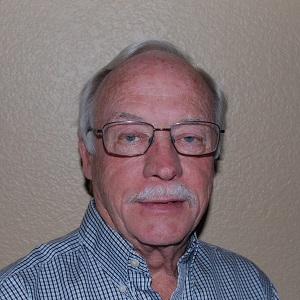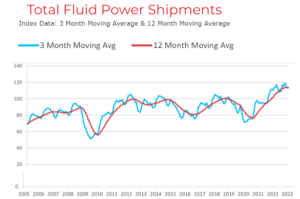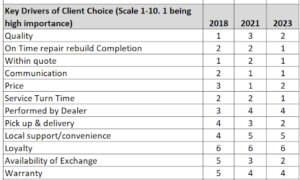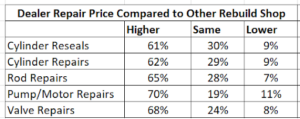My Journey of Career Growth
My Journey of Career Growth
Learning Without Scars is pleased to introduce our new guest writer, Kurt Pease. He was born on June 8th, 1961, in Portage, Wisconsin. He grew up in Whitewater, Wisconsin, in a family where his father worked as a university professor and his mother was a speech pathologist. From an early age, Kurt was instilled with a strong work ethic that would shape his future endeavors. His writing focuses this week upon those endeavors in, “My Journey of Career Growth.”
After completing his education, Kurt graduated from UW Whitewater in 1983 with a BA in marketing. He embarked on a successful career spanning several industries, where he held various management positions and achieved notable accomplishments.
In 1985, Kurt joined Sherwood Medical in Chula Vista, California, and later in Tijuana, Mexico. As a Master Scheduler and Production Planner, he was responsible for material, production, and sterilization control. During his tenure, Kurt designed and computerized the Production Plan, leading to increased efficiency and reduced backorders by 200% while maintaining low inventory levels. He also played a key role in implementing MRP software.
In 1987, Kurt joined Interactor America in Elkhorn, Wisconsin, as the National Sales Manager. In this role, he oversaw aftermarket sales and marketing activities, including dealer development and profit and loss accountability. Kurt successfully created a nationwide dealer organization and significantly increased potential income to $25 million through targeted dealer benefits. Additionally, he spearheaded the establishment of a $5.5 million wholesale market, representing 20% of corporate sales.
In 1993, Kurt joined John Deere Construction Equipment Company in Moline, Illinois, where he remained until 2017. He held various positions of increasing responsibility, including Territory Sales Manager, Sales and Marketing Manager, and Product Manager. As a Territory Sales Manager, Kurt promoted the sale of products and services to dealer/channel partners in the western United States. He excelled in building relationships and resolving issues between channel partners and the company. In his role as Sales and Marketing Manager, Kurt achieved outstanding results, with annual sales exceeding $80 million and independent distributor sales totaling $20 million. He also assumed the position of Product Manager, where he initiated a start-up program through the Deere dealer channel, overseeing new product development, inventory management, and advertising and promotion.
From 2017 to 2019, Kurt worked at John Deere Financial in Johnston, Iowa, as a Regional Finance Manager. He trained and coached finance managers to improve sales performance and increase market share. Kurt also developed effective channel partner relationships and supervised a team of six employees.
Most recently, from 2019 to 2022, Kurt served as the Director of Customer Support at 4Rivers Equipment, a John Deere and Hitachi dealer, located in Greeley, Colorado. In this role, he led the agricultural and construction organizations’ product support business efforts, aligning with financial and operational objectives to maximize profitability. Kurt excelled in attracting, retaining, and effectively engaging department personnel.
Throughout his career, Kurt Pease has achieved numerous accomplishments, including coaching, and motivating the largest dealer territory to maximize market share, creating replacement component programs and independent dealer organizations, and driving significant sales growth. His leadership, strategic thinking, and ability to build strong relationships have been instrumental in his success.
Currently, Kurt is semi-retired working for a local medical school. In his free time, he enjoys fly fishing in the rivers of the Colorado front range.
My Journey of Career Growth: Cultivating Relationships and Embracing Opportunities
In the journey of my career, there were pivotal moments that shaped my trajectory, often propelled by cultivating relationships and embracing opportunities outside my comfort zone. These two elements, although requiring effort and personal commitment, had a profound impact on my growth and success.
Building Meaningful Relationships
Building meaningful relationships is the cornerstone of any successful career. Whether it’s with colleagues, mentors, or industry peers, the connections we foster can open doors, provide valuable insights, and offer support during both triumphs and challenges. It is often surprising how these connections can come from individuals we least expect. Throughout my career, I have found that every position change or promotion was a result of a relationship that had been previously cultivated. My resume was rarely the deciding factor; rather, it was the bonds I had formed with others. People do business with people, and they prefer to work with individuals they have developed a relationship with. We naturally gravitate towards those who share common bonds and experiences.
During my college years, I worked as a night auditor at a popular resort. It was a wonderful job that allowed me uninterrupted study time once I completed my bookkeeping duties. It was during this time that I met Joe, a German sales and marketing executive at Interactor, a construction component manufacturer. Every night, Joe and I engaged in conversations that lasted for hours. From him, I learned invaluable insights about working for a multinational company, knowledge that college didn’t provide. Joe sensed my eagerness to learn, and even though we lost touch after I graduated, he tracked me down several years later in Tijuana, Mexico, and offered me a role as a Customer Service Manager working with companies like JI Case and John Deere. This opportunity became my foothold in the construction equipment industry. From there, my career flourished, moving from one company to another, consulting at John Deere, and eventually leading to a long and fulfilling career in that industry.
As I progressed in my career at John Deere, from Product Manager to Sales and Finance Regional Manager, I discovered the importance of reciprocity in relationships. By offering support, sharing insights, and actively engaging with others, I not only strengthened my professional network but also cultivated a sense of camaraderie and collaboration that proved invaluable in achieving common goals.
Embracing Uncomfortable Opportunities
Embracing uncomfortable opportunities has also been instrumental in my professional growth. Stepping outside of my comfort zone allowed me to learn and advance in ways that familiarity cannot offer. While the familiar may offer security, it’s often the unfamiliar territory that presents the greatest opportunities for growth. After completing my undergraduate degree in the Midwest, I decided to explore life outside of my comfort zone. My sister had landed in San Diego, and she offered me a place to live while I sought out my first post-college job. It was 1983, and the job market was tough. I was pushing out resumes with little success until a HR manager called me for an interview in southern San Diego. To my surprise, the company was looking for a Master Scheduler for a Maquiladora in Tijuana, Mexico—a role that required scheduling a factory that produced medical disposables. I knew nothing about factory scheduling, nor working in a foreign county, but I spent hours with the Plant Manager, who patiently taught me the ropes. Despite my initial apprehension, this experience taught me how to work in a plant environment where Spanish was the primary language spoken. It was a leap that bolstered my confidence and broadened my horizons. I grew up during those two years, crossing the US-Mexico border every day.
Taking calculated risks has also been a defining factor in my career progression. Whether it was pursuing a new role, exploring a different industry, or spearheading innovative initiatives, embracing change and uncertainty allowed me to seize opportunities for growth and advancement that I might have otherwise overlooked.
The Intersection of Relationships and Risk-Taking
What I have come to realize is that the most significant leaps in my career have often occurred at the intersection of cultivating relationships and taking calculated risks. The synergy between these two elements has propelled me forward in my professional journey. Leveraging connections to explore new opportunities and drawing on support networks to navigate unfamiliar terrain has been transformative. The trust and rapport built through meaningful relationships have served as a catalyst for venturing into uncharted territory with confidence and support. Knowing that I have a network of mentors, colleagues, and allies cheering me on has emboldened me to embrace uncertainty, seize opportunities, and continue evolving as a professional.
Conclusion
In retirement, I have decided to venture beyond my comfort zone by working at a local medical campus. Stepping into the realm of education and mentoring, I am ready to share my wisdom and experiences with aspiring medical professionals. Working at a medical campus will not only challenge me intellectually, but it will also allow me to connect with the next generation of doctors, nurses, and healthcare professionals. It is a chance to inspire and guide these eager minds as they take their first steps towards making a difference in the world of medicine. Although this new journey might be unfamiliar and require adaptation, I am excited to embrace the challenges and enrich my retirement years with meaningful engagement and the satisfaction of nurturing future healthcare leaders.












